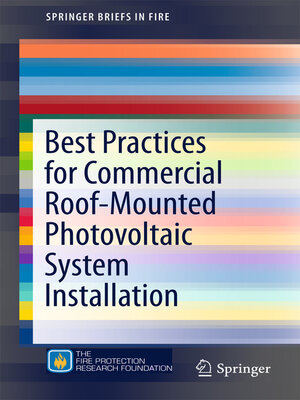Best Practices for Commercial Roof-Mounted Photovoltaic System Installation
ebook ∣ SpringerBriefs in Fire
By Rosalie Wills

Sign up to save your library
With an OverDrive account, you can save your favorite libraries for at-a-glance information about availability. Find out more about OverDrive accounts.
Find this title in Libby, the library reading app by OverDrive.



Search for a digital library with this title
Title found at these libraries:
| Loading... |
This SpringerBrief presents information on a wide variety of hazards and the damage potential caused by installation of a photovoltaic (PV) system. The current installation practices for PV systems on roofs create electrical, fire, structural, and weather-related hazards that do not comply to current codes, standards and guidance documents. Potential dangers include structural loading, wind loads, hail, snow, debris accumulation, seismic hazards, firefighting hazards, and electrical hazards. Despite the increased popularity of PV systems after the environmental movement, research shows that the costs of installing PV systems outweigh the benefits. Hazards of PV systems on roofs have caused several incidents in the United States; the most notable in Bakersfield, California, and Mount Holly, North Carolina. Designed for fire engineers and professionals, Best Practices for Commercial Roof-Mounted Photovoltaic System Installation offers recommendations to set up PV systems safely and sustainably.






